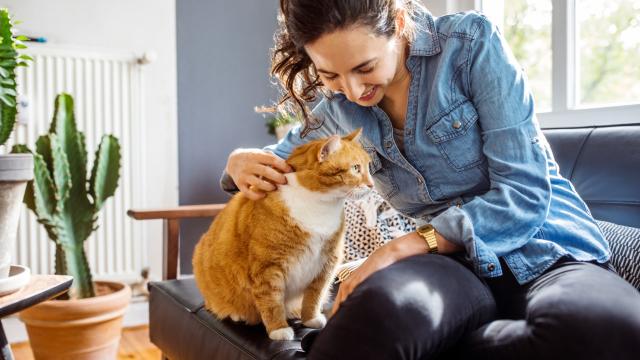Oh hello, plant parents! Welcome to our latest addition to Lifehacker’s collection of guides to looking after your plant babies.
This time, we’re chatting a little less about plant health alone, and looking more at how your plants may impact the health of other potential living creatures in your home: pets.
As many of you will likely already know, some plants and pets play together perfectly well. Especially if your pet is not the type that sees your plants as snacks.
Others, however, will give you more cause for concern. The good news, however, is that I’ve chatted to a couple of industry experts and they’ve both shared some solid advice on unsafe plants for your pet’s health.
The horticulturalist from The Jungle Collective and Bunnings Horticulturalist Katy Schreuder offered the following insight.
Which plants are most unsafe for pets?
Sadly, there are a fair few plant varieties that can be harmful to your pets if ingested. Schreuder shared that “Spathiphyllum, Lilies and Cycads” are a few of the most notable plants to keep an eye out for.
The Jungle Collective said that “Alocaosia are particularly poisonous to animals and [pets] should be taken to the vet immediately after ingestion”.
Ultimately, your best bet is to check before purchasing any plants in a pet-friendly home. Chat with experts and double, triple check especially if your pet is likely to take a bite of any plants you bring into the space.
How to safely introduce plants into your home:
This is going to depend on your pet and your home, and I suppose the plant, too.
The Jungle Collective shared that you can “keep plants away from pets by hanging them out of reach on hooks or placing them on furniture you know your pet can’t get to”.
However, if your pet is particularly curious, or the plant is likely to grow beyond the space you’ve confined it to it’s worth considering how long this choice is going to be safe and what your best move is from there.
Schreuder told Lifehacker that your best move is to “do your research to make sure the plants you choose aren’t harmful to your pets”.
But in addition to that, it’s a good idea to “position plants carefully if you have a pet that is likely to be curious about them – be mindful of plants falling over and causing damage”.
Which plants are safe for pets?
There are a few out there, and Jungle Collective has shared a long list here.
Jungle Collective’s horticulturalist shared:
“If your pet is likely to eat your plants its best to stay with safe no toxic varieties which come in all shapes and sizes. Some examples include Calathea, Ctenanthe, ferns, palms, peperomia and most succulents.”
Schreuder added that “There are also some plants that are good for animals. Cat grass is a nutritional plant for cats and can be bought in varying pot sizes. It is great for homes with cats – just be careful of the mess!”
Want to keep reading about plants? Of course you do. Here’s a quick little explainer on how to tell if you’re overwatering your indoor plants.

Leave a Reply
You must be logged in to post a comment.